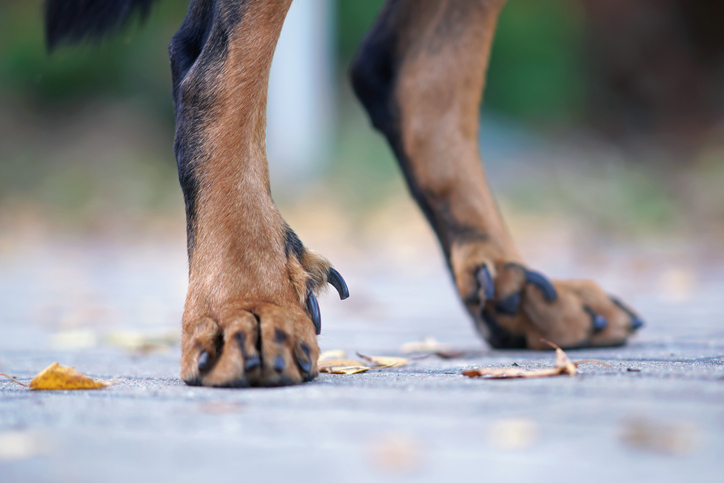
Play along with us.
Imagine that one night, you are rousted out of bed in the wee hours, and with only the moon illuminating your terror, you are stood up against a fence with something pointy leveled at your head.
A gruff voice barks out of the darkness and says:
How many AKC breeds require the presence of dewclaws?” NOW!
Recognizing how close you are to death by a plastic spork, you answer:
A) Six;
B) Twelve;
C) Eight;
D) Four
If you answered C (eight), you get to go back to bed but ONLY if you correctly answer Part 2 of the deranged kidnapper’s question. “What is a pollex, and do dogs have one?”
And here you wake up because it was all just a dream, but now you want to know: What is a pollex, and do dogs have one?
First things first. We did a search of the AKC groups including Miscellaneous (but not FSS), and found that as of this writing, eight breeds require the presence of dewclaws: The Great Pyrenees, Icelandic Shepherd, Beauceron, Briard, Cirneco dell ‘Etna, Danish Swedish Farmdog, Neapolitan Mastiff and the Kuvasz. Why they need them we’ll get into later, but for now, we move on to the “pollex.”
You have two of them because the pollex is just the anatomical term for your thumb. In dogs, there is a structure that’s analogous to your pollex, but it has a different form and function. A dog’s dewclaw isn’t exactly the same as a pollex, but they are related in terms of position and evolutionary homology. In other animals like primates – and yes, us – the pollex has more developed functionality as an opposable digit and in certain breeds, the dewclaw also serves to help grip items. Dewclaws also provides extra traction and stabilization during high-speed turns. At the end of the day, however, a dog’s dewclaw is more of a vestigial digit that evolved to serve specific functions as opposed to the fully functional “thumb” that we humans have.
Interestingly, one breed standard does mention the “T” word (thumbs). From the Beauceron standard: “Double dewclaws form well separated “thumbs” with nails, placed rather close to the foot.”
We conclude with a charming bit of folklore based on fact. We all know that unlike human thumbs, a canine’s dewclaws are typically positioned higher on the leg and usually don’t make contact with the ground when the dog is standing, and often not in stride.
But as lore would have it, when a dog walks through grass in the morning before the dew has vanished, the claw (located up a dog’s leg) only skims along the top of the grass which is how the dew claw got its name. Dew • Claw.
Photo of a Beauceron’s magnificent dewclaws by Eudyptula/iStock
